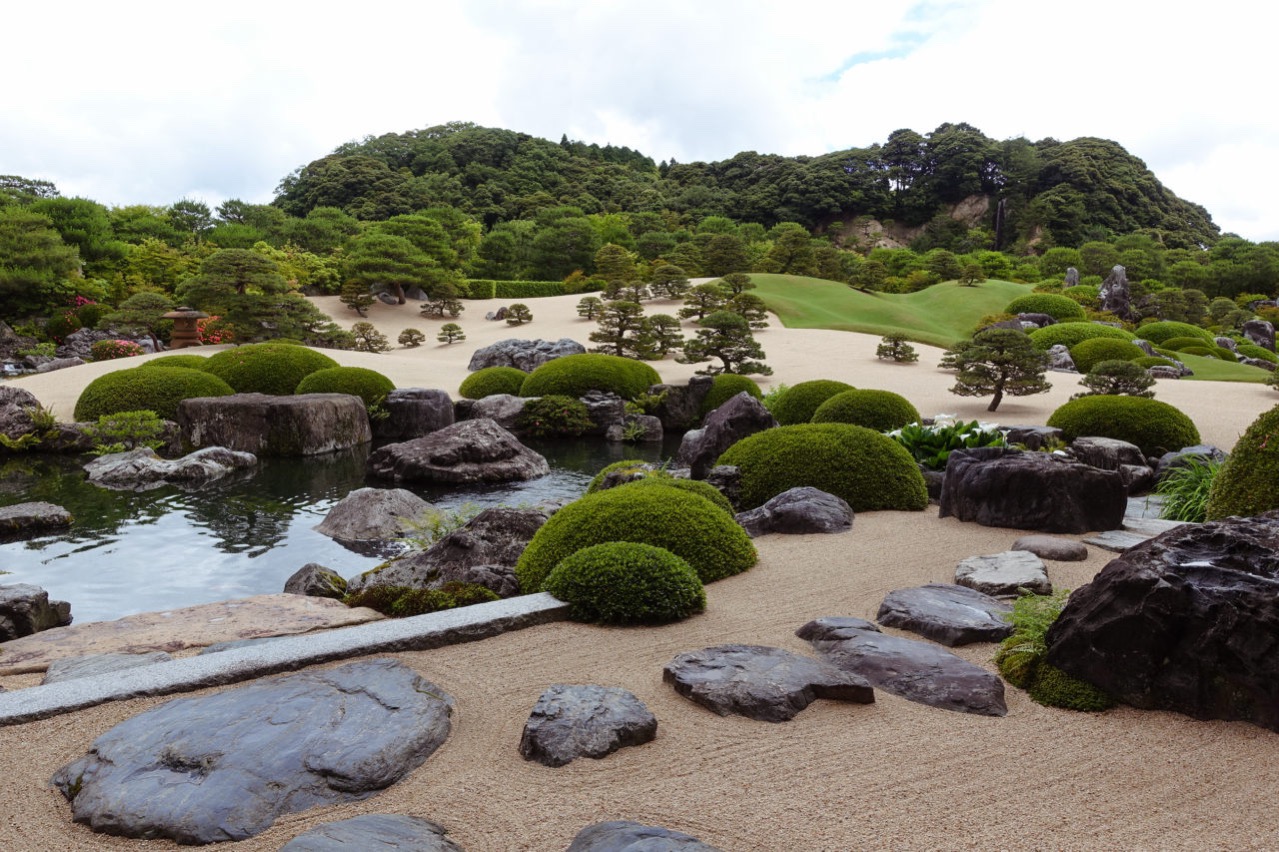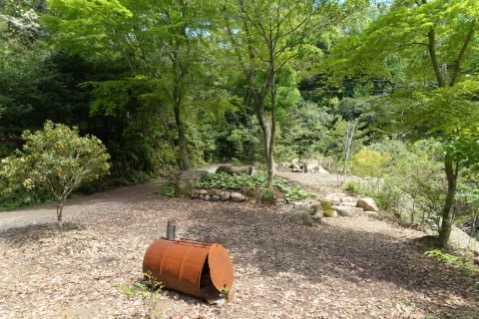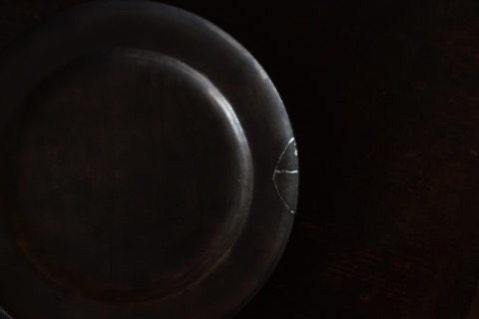
忽然之間,就好像要看看庭園,坐在寺廟或美術館的長廊之上,目光輕馳地落在庭園的某些角落。有的庭園風景很多,有花有樹有青苔,有小穚、流水與石燈,有的庭園風景很少,就有只數塊石頭、一堆碎石。
我看過風景最多的庭園在島根,位於足立美術館之內。這個庭園真的只供看而已,走不進去,還隔著大玻璃。庭園內草屏起起伏伏伏,與背後島取的山丘一同勾劃出壯麗的風景。前方嶙峋的石穿挿在修剪成大饅頭的灌木林之間,沙丘與草屏的界線也被剪成流麗的弧形。大自然裡,從來沒有如此工整而小心翼翼的景物。我到訪時正值初夏,足立美術館的庭園春夏秋冬的景致大不相同,全都美不勝收。未曾全目睹,但我可以想像得到,那美麗需要何等的苦心經營。
風景最少的庭園在京都的龍安寺的石庭。長25米,闊別10米的小庭園之內散落著15塊石頭,聽說不管從哪個角度看,都只能看到的14塊,總有一塊被遮擋著。我沒有仔細考究過這玄妙的傳說,但每次到來時仍感到這庭園奇異不已。庭園後的樹木自低矮牆壁探頭過來,與石庭結合為一,庭園在圍牆內也在圍牆外。15塊石頭,石頭與石頭之間,是河道嗎?還是海洋?石頭真的石頭嗎?它們有時看來像高山,有時又像小島。山上島上有沒有樹?飛鳥會否在此歇息?狹小的庭園深不見底,空白處滿滿是雙目不可見的風景。
足立美術館與龍安寺,究竟哪個是風景很多的庭園,哪個是風景很少的庭園,我自己也說不上來。
I had a sudden crave for viewing gardens. Sitting on a bench in a temple or art gallery are some immediate ways one can effortlessly appreciate the beauty of them. Some gardens offer more vibrant sceneries that provide a view of flowers, trees, mosses, small bridges, flowing water and stone lanterns; while some others offer a rather plain view with only a few pieces of stone and some pebbles.
In the garden of Adachi Museum of Art in Shimane Prefecture, I have come across the most vibrant scenery being offered. The garden is merely for appreciation through a glass wall as visitors are not allowed to walk inside. Patches of grass of different heights create a splendid picture when pairing up with the mountain range of Tottori in the background. In between the ball-shaped scrubs lie pieces of baroque stone forms. Even the boundary between the grass patches and sand dunes is lined carefully to form a beautiful and sleek curve. These carefully carved sceneries are never part of nature. Adachi Museum of Art offers different admirable views that change along with seasons. Although I only had the luck to see the early summer view in my last visit, I can already imagine how much effort is required to maintain the beautiful sceneries for all four seasons.
Quite an opposite to Adachi Museum of Art, Ryōan-ji in Kyoto offers the plainest stone garden. In the mini garden of dimension 25 m by 10 m contains as few as just 15 pieces of stone; rumor says there is always one piece of stone being hidden from sight, therefore visitors can only see 14 pieces of stone from any angle. I have never verified this curious myth, but the garden itself is already enough to enchant me. At the back of the garden is a low wall; from behind the low wall, trees climb above the wall and become part of the stone garden. The wall is at the same time a boundary and one of the elements of the stone garden. Is that river or ocean dissected by the 15 pieces of stone? The stones sometimes appear like mountains or islands, or are they simply pieces of stone? Are there trees on top of the mountains or the islands? Do birds rest here? The tiny garden has an enormous depth, hidden behind the emptiness is a scenery not to be seen with eyes.
Adachi Museum of Art and Ryōan-ji, which has a vibrant garden, which has a plain garden? This is a question yet to be answered.





